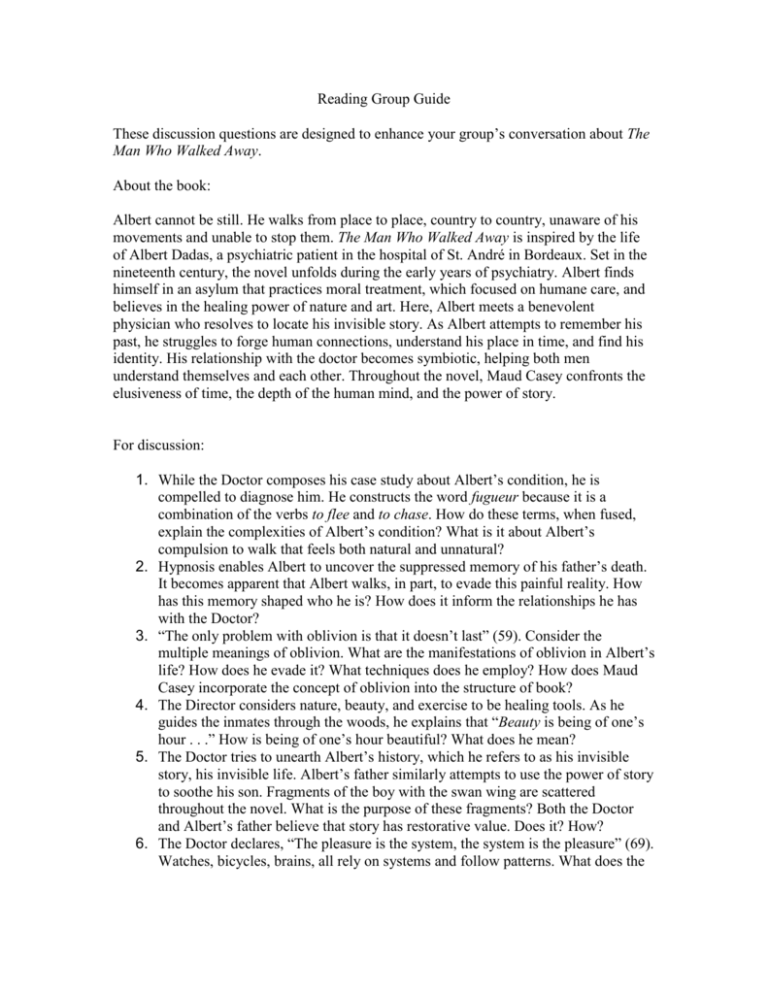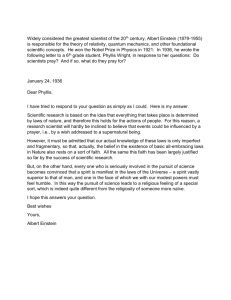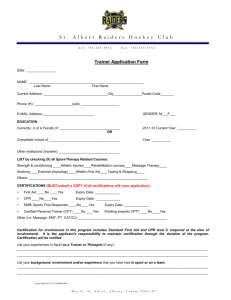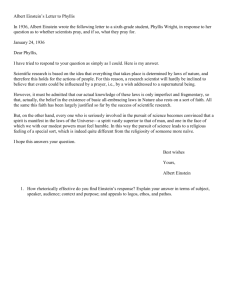The Man Who Walked Away Reading Group Guide
advertisement

Reading Group Guide These discussion questions are designed to enhance your group’s conversation about The Man Who Walked Away. About the book: Albert cannot be still. He walks from place to place, country to country, unaware of his movements and unable to stop them. The Man Who Walked Away is inspired by the life of Albert Dadas, a psychiatric patient in the hospital of St. André in Bordeaux. Set in the nineteenth century, the novel unfolds during the early years of psychiatry. Albert finds himself in an asylum that practices moral treatment, which focused on humane care, and believes in the healing power of nature and art. Here, Albert meets a benevolent physician who resolves to locate his invisible story. As Albert attempts to remember his past, he struggles to forge human connections, understand his place in time, and find his identity. His relationship with the doctor becomes symbiotic, helping both men understand themselves and each other. Throughout the novel, Maud Casey confronts the elusiveness of time, the depth of the human mind, and the power of story. For discussion: 1. While the Doctor composes his case study about Albert’s condition, he is compelled to diagnose him. He constructs the word fugueur because it is a combination of the verbs to flee and to chase. How do these terms, when fused, explain the complexities of Albert’s condition? What is it about Albert’s compulsion to walk that feels both natural and unnatural? 2. Hypnosis enables Albert to uncover the suppressed memory of his father’s death. It becomes apparent that Albert walks, in part, to evade this painful reality. How has this memory shaped who he is? How does it inform the relationships he has with the Doctor? 3. “The only problem with oblivion is that it doesn’t last” (59). Consider the multiple meanings of oblivion. What are the manifestations of oblivion in Albert’s life? How does he evade it? What techniques does he employ? How does Maud Casey incorporate the concept of oblivion into the structure of book? 4. The Director considers nature, beauty, and exercise to be healing tools. As he guides the inmates through the woods, he explains that “Beauty is being of one’s hour . . .” How is being of one’s hour beautiful? What does he mean? 5. The Doctor tries to unearth Albert’s history, which he refers to as his invisible story, his invisible life. Albert’s father similarly attempts to use the power of story to soothe his son. Fragments of the boy with the swan wing are scattered throughout the novel. What is the purpose of these fragments? Both the Doctor and Albert’s father believe that story has restorative value. Does it? How? 6. The Doctor declares, “The pleasure is the system, the system is the pleasure” (69). Watches, bicycles, brains, all rely on systems and follow patterns. What does the Doctor find compelling about the nature of systems? How does he incorporate this passion into his approach to medicine? 7. The doctor firmly insists that everyone desires, “To be given shape by the constraints of narrative” (185). Albert, in an attempt to appease the Doctor, fabricates a memory, sending the Doctor into a tailspin. What provokes the Doctor’s extreme reaction? 8. The Doctor is drawn to photography because it marries the precision of science with the unquantifiable nature of human experience; as the photographer muses, photography “eludes us, as art should” (183). In the novel, where does science end and art begin? How are the Doctor’s methods scientific and how are they artistic? What’s the difference? 9. When the Doctor leaves for Paris, the desire to walk overtakes Albert. Marian and Walter take him into the courtyard, link arms, and walk in circles. In the presence of his friends, Albert thinks, “[I don’t] need to thrash. Marian and Walter are walking [me] out of the mud” (167). Consider this moment. Who is supporting whom? How do their varying ailments complement each other? Is this a turning point in Albert’s recovery? How so? 10. Twice in the novel, the Doctor travels to hear the great doctor lecture. Once before he meets Albert, and again after he develops an obsession with Albert’s condition. Compare and contrast the Doctor and the great doctor. How do their approaches to modern medicine differ? What is the difference between invisible lesions and invisible stories? What can their dueling ideologies tell us about medical ethics? 11. When reflecting on the Doctor’s past, the narrator observes, “He has never been afraid. He has never had the time” (39). Why does fear require time? How does Albert’s constant movement stunt his ability to fully experience love, fear, and happiness? In what ways does the constancy of the asylum both disquiet and excite him? 12. Consider the relationship between the veteran and Albert. One constantly relives a moment from his past, and the other cannot be present from one moment to the next. Both of them inhabit nonlinear worlds. When confronted with the aggressive veteran, Albert thinks, “Teach me then. Teach me how to remember” (138). How do their conditions represent the ways in which people respond to the relentlessness of time? 13. At the end of the book, the Doctor throws his watch in the river. What does this gesture reveal about his rehabilitation? How do his sessions with Albert help him understand his own past? 14. When Albert leaves the asylum, the Doctor hopes he will never return. Why does Albert choose to leave? Looking closely at the end of the novel, do you think Albert is truly rehabilitated? 15. Given his condition, Albert disobeys the rules and conventions of time. The people that Albert encounters are fascinated by this. What is enviable about the way Albert experiences time? What is tragic?








